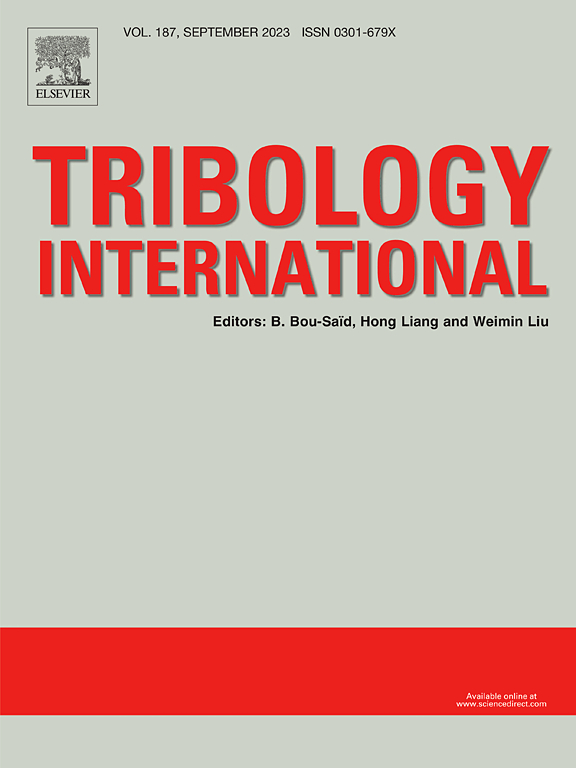Effect of oleic acid surfactant on the stability, viscosity and tribological performance of hBN versus MoS2 nanolubricants
IF 6.1
1区 工程技术
Q1 ENGINEERING, MECHANICAL
引用次数: 0
Abstract
Nanolubricants are lubricants that contain nanoparticles dispersed within a base oil. Nanolubricants encounter significant obstacles in maintaining stable dispersion, notwithstanding their exceptional tribological performances. This study investigates the impact of oleic acid (OA) surfactant on the dispersion stability, viscosity, and tribological performance of hBN and MoS2 nanoparticles in palm kernel oil (PKO) nanolubricants. Visual observations showed that OA improved the dispersion stability of hBN nanolubricant, as evidenced by reduced sedimentation over time, but was less effective for MoS2 nanolubricant. A positive correlation was found between lower viscosity and better dispersion stability. Enhanced dispersion stability of hBN nanolubricant improved its tribological performance, reducing the coefficient of friction (COF) and wear scar diameter (WSD). Conversely, OA surfactant negatively affected MoS2 nanolubricant, increasing COF and WSD, indicating poorer tribological performance.
油酸表面活性剂对hBN与MoS2纳米润滑剂稳定性、粘度和摩擦学性能的影响
纳米润滑剂是一种含有分散在基础油中的纳米颗粒的润滑剂。尽管纳米润滑剂具有优异的摩擦学性能,但在保持稳定分散方面遇到了重大障碍。本文研究了油酸(OA)表面活性剂对hBN和MoS2纳米颗粒在棕榈仁油(PKO)纳米润滑剂中的分散稳定性、粘度和摩擦学性能的影响。视觉观察表明,OA改善了hBN纳米润滑剂的分散稳定性,随着时间的推移,沉淀减少,但对MoS2纳米润滑剂的效果较差。粘度越低,分散稳定性越好。hBN纳米润滑剂的分散稳定性增强,改善了其摩擦学性能,降低了摩擦系数(COF)和磨损疤痕直径(WSD)。相反,OA表面活性剂对MoS2纳米润滑剂有负面影响,增加了COF和WSD,表明摩擦学性能较差。
本文章由计算机程序翻译,如有差异,请以英文原文为准。
求助全文
约1分钟内获得全文
求助全文
来源期刊

Tribology International
工程技术-工程:机械
CiteScore
10.10
自引率
16.10%
发文量
627
审稿时长
35 days
期刊介绍:
Tribology is the science of rubbing surfaces and contributes to every facet of our everyday life, from live cell friction to engine lubrication and seismology. As such tribology is truly multidisciplinary and this extraordinary breadth of scientific interest is reflected in the scope of Tribology International.
Tribology International seeks to publish original research papers of the highest scientific quality to provide an archival resource for scientists from all backgrounds. Written contributions are invited reporting experimental and modelling studies both in established areas of tribology and emerging fields. Scientific topics include the physics or chemistry of tribo-surfaces, bio-tribology, surface engineering and materials, contact mechanics, nano-tribology, lubricants and hydrodynamic lubrication.
 求助内容:
求助内容: 应助结果提醒方式:
应助结果提醒方式:


